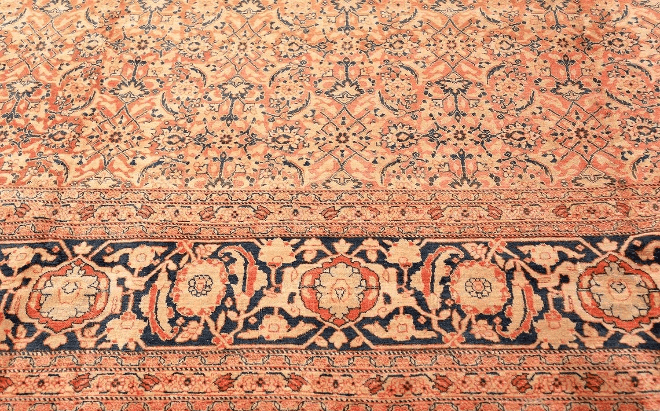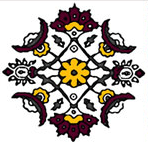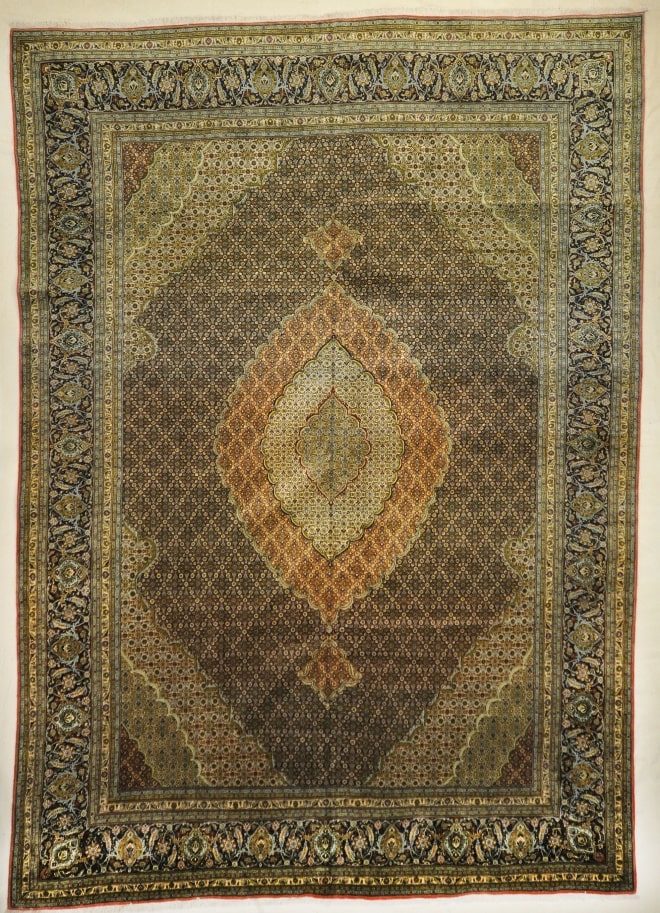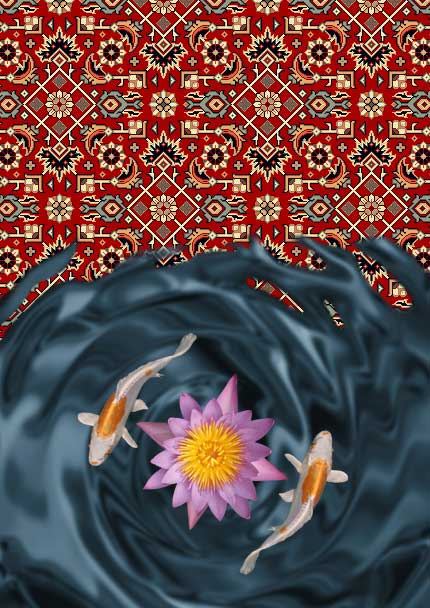Mahi (fish), fish in pond, mahi darham (twisted fishes) and Herati. These are names for a widely used Persian pattern originated in the city of Herat (nowadays in Afghanistan) which has spread westwards across Persia, Anatolia and Caucasia with lots of interpretations applied to different types of design, in both rectilinear and curvilinear renderings.
Serving mainly as a repeating pattern, the general form consists of a flower framed in a diamond with curving leaves out of it parallel to each side. Recalling tiny fishes, these curving leaves have been called ‘mahi’ most probably by weavers and merchants. But interestingly fishes were actually included in the ancient predecessors of the general form. Being remained from Mithraism iconography in the Iranian visual traditions, these predecessors show two fishes holding a lotus or embracing a round face, symbolizing the birth of Mithras in the water. Such a design were still painted in books’ illustration during Timurid rule in Herat, when its more abstract renderings were widely used in royal carpet designs.
What is called “Tabriz Mahi” is a specific central medallion design attributed to the city of Tabriz in Persian Azerbaijan, northwest of Iran which is one of the most important rug centers in both weaving and trading. Recalling the general form of traditional book bindings, Tabriz Mahi design is made up of a rather large oval central medallion with two pendants and corners shaped of stretched bands. Fields are filled with various types of mahi repeat. Sometimes central medallion and corners, too, enjoy the same repeating Herati pattern. Tabriz Mahi pieces are woven in all favored rug sizes. The knot count differ from 40 to 80 Raj. Like other Tabriz pieces, Mahis are double-wefted with symmetrical (Turkish) knots. Cotton, wool and silk are the main raw materials.
Beige, cream, camel brown, navy blue, burgundy, rose and light
fishes were actually included in the ancient predecessors of the general form. Being remained from Mithraism iconography in the Iranian visual traditions, these predecessors show two fishes holding a lotus or embracing a round face, symbolizing the birth of Mithras in the water. Such a design were still painted in books’ illustration during Timurid rule in Herat, when its more abstract renderings were widely used in royal carpet designs.
What is called “Tabriz Mahi” is a specific central medallion design attributed to the city of Tabriz in Persian Azerbaijan, northwest of Iran which is one of the most center. green are common colors used in Tabriz mahis.





